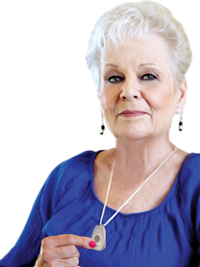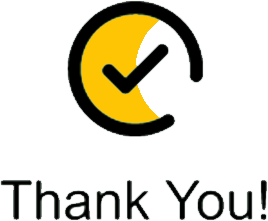Based on writings from We-make-money-not-art.com, posted by Regine, titled "Accenture Labs", "Robot doctors" and "Elders will drive techno devices innovation"
New Edited Article and Commentary by Dr. Don Rose, Writer, Life Alert
--
As you may have heard, there is a coming boom in elderly boomers. By most estimates of when the baby boom began -- around 1946 (a year after World War II ended, when men returned home in droves to marry and practice peacetime activities, wink wink) -- the oldest boomers are now turning 60. Hence, as you might expect, the over-60 population is soon expected to increase dramatically, and not just in the U.S. (see below).
This article looks at a few ways in which this trend is driving tech-related innovations. Companies that follow the classic maxim "The Trend is Your Friend" seem bound to profit from this move towards an older citizenry. It's a mutually beneficial cycle; the unique needs of seniors help drive new inventions, which can then in turn help those seniors. The elderly help technology, and technology helps the elderly. Then, trickling down, all of us (even relative youngsters) can reap the benefits of these "technovations".
--Dr. Don Rose
Old is the New Big Thing: An Elderly Explosion
The United Nations estimates that, by 2050, about 33% of people living in developed nations will be age 60 or over, a staggering figure. In response to this trend, a number of companies are developing products and services to address senior needs, and in many cases, profit from it. The results of their research and creativity are quite fascinating.
Smart Homes
For example,
BBC Technology published an article about work done at
Accenture Labs to make life easier for elderly people -- by turning "normal" homes into "smart" homes. The potential benefits of smart homes include anticipating health problems and automatically detecting slips or falls. A
medical alarm system like
Life Alert lets seniors who experience a fall or other emergency summon help with the push of a button they wear -- an impressive technology in itself -- but smart homes of the future may even be able to predict when a fall is about to occur. Such predictions might be achieved by detecting changes or unusual patterns in the way a senior is walking around the house.
To delve deeper into this topic, please see the website for
Red Herring.
Robot Docs
Another futuristic innovation that now seems just around the corner is the use of "robot doctors". Nursing homes and hospitals across the U.S. have tested "robodocs" as a possible solution for the growing number of seniors in need of healthcare support.
InTouch Health, a pioneer in Remote Presence for healthcare, designs robots featuring flat video screens (the head) and video cameras (the eyes and ears). With a joystick, a flesh and bone doctor can manipulate the robot, in order to check on patients and interact with them via real-time video hookup. Most of the patients who tested the technology were quite satisfied by the results.
One benefit of robodocs would be allowing specialists to check on their patients in multiple cities, saving the time and expense of traveling around the world to be in the same physical space with each patient. This could potentially lower healthcare costs, and also allow more patients to have the benefit of examination and diagnosis by nationally recognized experts. However, a potential downside of overusing this technology is the loss of intangible benefits like human contact and bedside manner.
More information on this topic is available at
MSNBC's website.
Seniors Drive Technological Innovation
Medicine, healthcare and smart homes are not the only areas where the coming "boomer-elderly" boom is driving technology. Elders are becoming a key market for many other high-tech products and services. For years, product managers and marketing mavens have talked about creating something "easy enough for grandma to use". Now grandma is going to be part of a very big market. The 18 to 49 demographic that Madison Avenue endlessly courts may soon relinquish its buzz and top billing to the 50-plus set. Ads may shift from preferring models with hot fashion to moms with hot flashes. And let's not forget grandma; already, one of the fastest-growing segments of the auto market is female drivers over 65 (presumably buying cars because their late husbands did the driving.)
In the future, techno-devices will be redesigned to better accommodate users with limited manual dexterity, poor eyesight, or reduced hearing. Seniors will drive innovation and market growth in assistive technologies -- everything from PDAs to hearing aids to medical implants. The assistive tech market is already growing, but should explode as boomers retire, for at least two reasons:
- people who have spent decades using PDAs and mobile phones will be less resistant to the idea of having devices that help them remember to take their pills or do other tasks;
- boomers were the breakthrough market for cosmetic surgery and medical implants, so the idea of using technology to stay well and on schedule, as well as improve their well-being, is not new to them.
In other words, the "new elderly" may be the first retiring generation that truly "gets" new technology, and won't relinquish it just because they are growing older (or should I say, getting better). Boomers are used to being early adopters, and hence are more likely to stay early adopters - meaning we may need to revise the stereotype of young techheads always being the first to popularize new products and services. The combination of a retiring "My Generation" and a never-tiring "Myspace Generation" -- two groups with lots of free time on their hands -- could fuel a new technology boom, as tech titans race to make gizmos and gadgets for both ends of the age spectrum.
This article is based on postings made by Regine on the blog called We-make-money-not-art.com; the postings are titled "
Accenture Labs", "
Robot doctors" and "
Elders will drive techno devices innovation". The article on this page, and the writings it is based on, are covered by a
Creative Commons License (version 1.0). SUMMARY OF THE CREATIVE COMMONS ATTRIBUTION LICENSE for this work: Attribution 1.0: You are free to copy, distribute, display, and perform the work; to make derivative works; to make commercial use of the work. Under the following conditions: (1) Attribution -- You must attribute the work in the manner specified by the author or licensor. For any reuse or distribution, you must make clear to others the license terms of this work. Any of these conditions can be waived if you get permission from the copyright holder. Your fair use and other rights are in no way affected by the above. Please go to the
Creative Commons License site to view more information about the Creative Commons license that applies to this work.
For more information about Life Alert and its many services and benefits for seniors nationwide, please visit the following websites:
http://www.lifealert.com
http://www.seniorprotection.com
http://www.911seniors.com/






